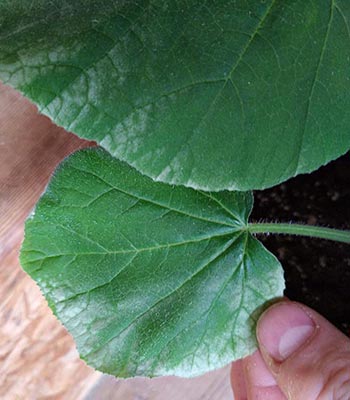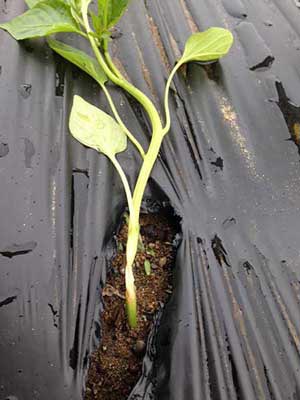
Pest/disease identification and lifecycle, most common symptoms and crops affected:
Plants that have not yet been hardened off thoroughly, or can’t get all the water they need, can suffer from something akin to a sunburn. The damage usually shows up first as a bleaching of exposed leaf surfaces, typically higher up on the plant, though sometimes only becomes apparent as necrotic leaf sections a day or two later. It can appear concerningly similar to a foliar disease.


Sunscald is caused by photo-oxidative stress, an overloading of the plant’s photosynthesis system. We “harden off” transplants that have been started indoors, or inside greenhouses, because they have not yet devoted much energy to the coping mechanisms that will help them survive the drying winds and much stronger light they encounter outdoors. Adequate water supply is critical to plants’ ability to cope with these stresses. Plants that haven’t been hardened off, or are limited in water supply, are therefore more susceptible to sunscalding. Other root damage, such as damping-off or insect feeding damage may also impair sufficient water supply. The dead tissue caused by sunscalding can become an entry point for disease.
Seedlings that have been recently planted into black plastic mulch may suffer from tissue damage near the base of the stem. This is sometimes called wind-whip though it may be caused by a combination of bright sunlight, heat from direct contact with the black plastic and possibly some mechanical injury from strong winds – particularly if stems are a bit leggy.
Management options:
Best practices to avoid sunscald and other transplant issues, are to grow seedlings under bright light conditions and with plenty of air movement. Try to avoid leggy and pot-bound seedlings which may have inadequate root systems to supply the above ground growth. Harden off seedlings in a semi-protected area that provides “close to outdoor” conditions, with some shielding from wind and light extremes. Several days of hardening off are best, but even a single day will help as some of the plants internal stress response mechanisms are up-regulated quickly.
Actively growing plants are continually restructuring themselves, and you will notice that new leaves will be best adapted for the conditions they develop in.
